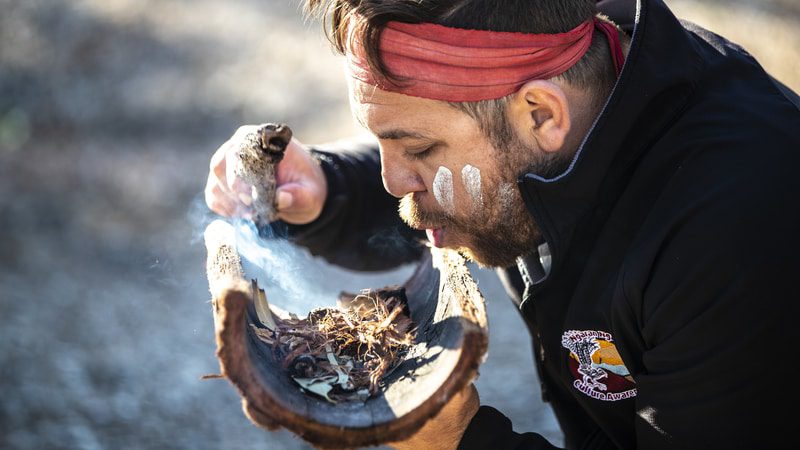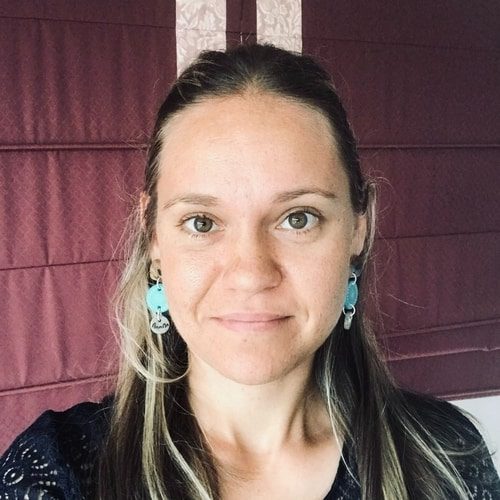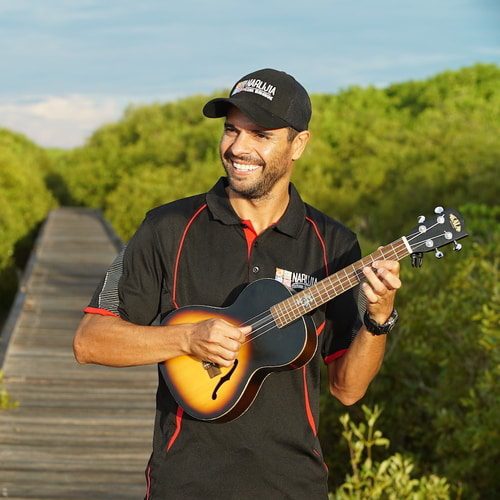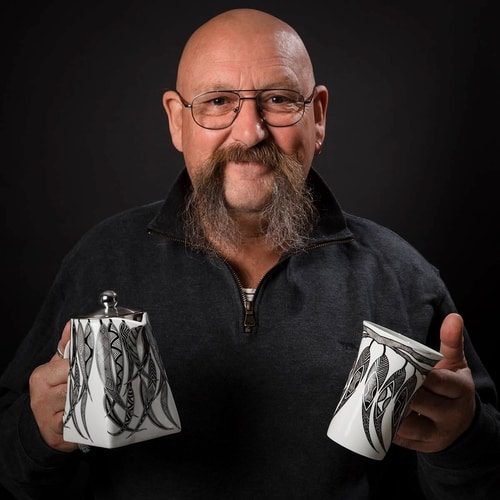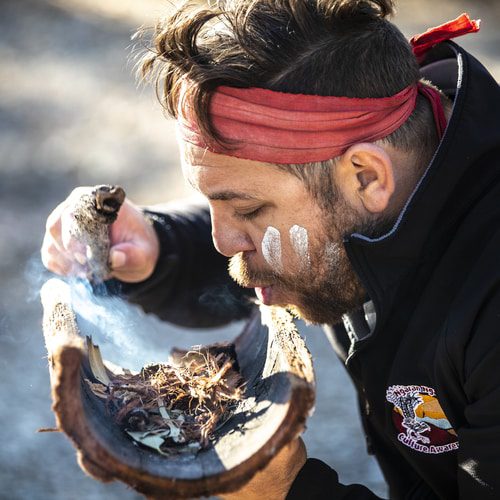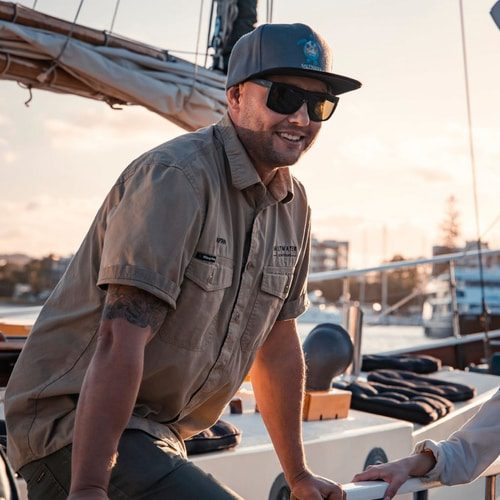Held in the first week of July each year, NAIDOC Week celebrates and recognises the culture and achievements of Aboriginal and Torres Strait Islander peoples across Australia. It’s a chance for everyone to come together and experience the oldest continuous living cultures on earth. But it’s also a time for action. We sat down with First Nations artists and tour operators to find out what NAIDOC means to them.
This blog was brought to you in partnership with Welcome to Country, a not-for-profit marketplace for Australian Indigenous experiences.
“Now is our time. We cannot afford to lose momentum for change,” says the official NAIDOC Week website. “We need to move beyond just acknowledgment, good intentions, empty words and promises.”
The National Aborigines and Islanders Day Observance Committee (NAIDOC) has its roots in the 1938 Day of Mourning, and became a week-long event in 1975. Every year, in the first week of July, events and activities are held across Australia to recognise the culture of Aboriginal and Torres Strait Islander peoples.
For some First Nations people, though, NAIDOC Week has become a performative gesture, rather than a real vehicle for change. As a result, this year’s theme is Get up! Stand up! Show up!. It’s a call to action. A chance to, according to the organisation, “amplify our voices and narrow the gap between aspiration and realty, good intentions and outcome.”
We sat down with Indigenous artists and tour operators from around the country to hear what NAIDOC means to them, in their own words.
Deborah Hoger | Riley Callie Resources
“For me, NAIDOC is a chance to celebrate where we are as a people, and in the context of the education space, it’s about bringing Aboriginal and Torres Strait Islander culture to the forefront of the classroom, and facilitating opportunities for children to learn from the world’s oldest living culture.
This year’s theme is a call to action. It asks us to step outside of our comfort zones, and to drive the change that we want to see in our country. It also reminds us of those who have come before us and paved the way. If you want to participate, get out there and get involved in local events in your community. Become educated on issues that are important to our mob. Most importantly, use your platforms to amplify First Nations voices; this could be in your personal networks, on your social media, in the workplace, anywhere and everywhere.”
Bart Pigram | Narlijia Experiences Broome
“NAIDOC week, to me, is like a beacon. It’s a moment to immerse ourselves in Aboriginal and Torres Strait Islander cultures around Australia. A time to learn, a time to connect and, for our mob, a time to preserve and share our rich and ancient cultures. I encourage all people to engage in NAIDOC Week, but also implore everyone to seek your own Aboriginal cultural experiences more than once a year!
To me, this year’s theme means a statement to break out of the generational oppression of our people, and to establish ourselves in a successful and healthy position of two worlds. I think it can be done if we all embrace empathy and unity between our cultures. We can do it.
My life is a NAIDOC week. The past 12 years, for me, have been a cultural and historical revelation. I’m firmly confident that the rest of my career, the rest of my life, will be to preserve and share our culture here in Broome, and to reconnect my maternal family culture of the Wajarri people.”
Mick Harding | Taungwurrung Kulin artist
“NAIDOC, to me, is a celebration of our survival. We are still here after all that our community has lived through since invasion/colonisation. This year’s theme, Get up! Stand up! Show up!, Is about continuing our fight to be recognised in the Constitution. We want a Treaty for our people.
This year, I’m most looking forward to celebrating our survival with everyone, but if we’re going to inspire people to Get up! Stand up! Show up! during NAIDOC Week, and beyond, we should teach our next generation to continue the fight for our rights.”
Dwayne Bannon Harris | Ngaran Ngaran Culture Awareness
“When you live and breathe it, NAIDOC generates presence for our communities. We’re getting more and more traction as the years go on.
But to be honest, I’d like to see NAIDOC Week spread across the whole year. There should be pockets of these ongoing celebrations across the year. I’ve got a saying: make it neutral, rather than normal. There is some amazing work going on around the country. What I’m trying to say is we need a bit more cohesiveness. There’s more to do, more than just NAIDOC week. We run into that pitfall a bit, you know, it’s all clumped into one. My inbox is full of NAIDOC stuff.
For people who want to get involved, I say: engage with the community. Invest in it. Not just from a monetary point of view, but also time and energy and learning. It’s 2022, and there’s never been a better time to engage with Aboriginal businesses.”
Simon Thornalley | Saltwater Eco Tours
“NAIDOC is a celebration of Culture, family and community. It means coming together as a diverse country to celebrate our First Nations people.
It also brings back memories as a child of family reunions, food, coming together, and a time where we can feel proud and connected as one. This year, I’m looking forward to celebrating with the local community, friends and family, connecting with all the mob and seeing that positivity spread.
We can all take part in NAIDOC Week. All of us. People should not be afraid to get involved and encourage their workplaces to get involved. Support Indigenous businesses and understand their products, and who they are, make new friends, and share the good vibes that NAIDOC always brings. It’s time we all take responsibility and contribute to making change within our own workplaces and community groups.”
Want to support Indigenous-owned businesses during NAIDOC Week? Welcome to Country is a great place to start. You can also find Intrepid’s First Nations experiences in Australia over here.

